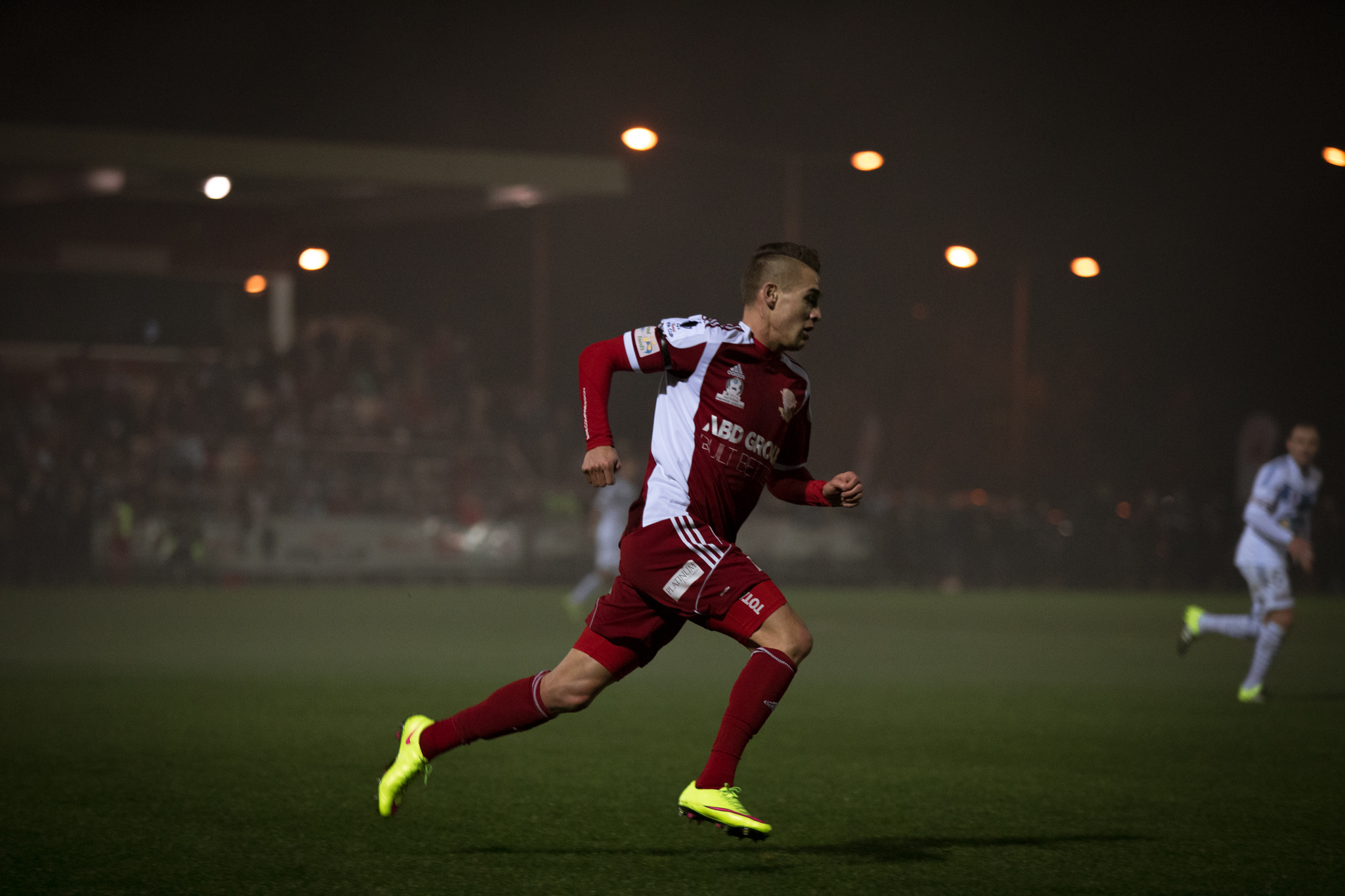Image: Mark Avellino
When the substitute board went up in the 60th minute of Melbourne Victory’s clash with Western Sydney on Saturday, many expected Bundesliga loanee Max Beister to make his A-League debut after a protracted wait.
Instead it was NPL Victoria graduate Jai Ingham to make his first A-League appearance of the season, going on to score and then assist the German, who made his entrance in the 73rd minute.
It wasn’t the first time Ingham’s name had surprised pundits – certainly his own signing at Victory in January 2016 came out of left field.
When Ingham left Brisbane Roar for Hume City in 2015, he may have thought his A-League ship had sailed.
In Australian football, the A-League has an unforgiving tendency to chew up players who aren’t already well-entrenched in the system and spit them out back to the member federations – often without a second bite.
After a promising maiden senior foray with Olympic FC in Queensland in 2012, two years in an A-League youth development system yielded one senior appearance – not much in the way of development.
While the then 21-year-old’s Hume City move came with a glimmer of hope of putting himself back in the window – as with most leagues, drop down a division and try work your way back up again – the reality would have been knowing that A-League clubs seldom look for anyone past their teenage years, let alone players outside their own systems in the NPL.
So when Melbourne Victory decided to sign Ingham as attacking cover, it may have come as a surprise to both player and the wider footballing public in Victoria.
Especially as, with no disrespect to Ingham, not many would have picked him amongst the most consistent performers in the league, or even a Hume City team which boasted the likes of Chris Oldfield and Nick Hegarty, in 2015.
While he hit the ground running in the NPL, earning player of the month honours, most of his nine league goals came within the first 10 rounds of the season.
Yet the NPL isn’t always a true indicator of one’s potential – its semi-professional nature means players’ and coaches’ ambitions slowly take a back seat to other life priorities, hence standard and consistency of competition naturally has a lower ceiling than professional leagues.
It were Ingham’s performances against Victory in a friendly and FFA Cup that caught the club’s eye, and he spent the December training at Gosch’s paddock before being signed as a ‘mature age rookie’ when the transfer window opened.

In any case, a season of senior football in the NPL looked to serve Ingham well, and his Victory transition showed promise with an Asian Champions League goal and a brace of assists against Central Coast.
With the benefit of a pre-season in the A-League, he added a goal against Juventus to his highlight reel and, more meaningfully, the recent goal and assist against the Wanderers in the season proper.
So Ingham isn’t a starter (considering Victory’s wide attacking depth in Rojas, Beister, Austin, Khalfallah), but his contributions highlight he’s not entirely out of his depth in the A-League, either.
It’s in the interest of member federations to see players successfully transition to the A-League. It validates the second tier as a pathway – via player development in a cutthroat environment where clubs are dependent on results at both ends of the table – but also supports the cause for eventual A-League expansion and a second national division for the good of the league and the nation’s players and coaches.
As many have repeatedly stated, nine professional Australian clubs are simply not enough to cater for the burgeoning participation in this country, especially after factoring in players who are well-entrenched in the system and can easily move between multiple clubs.
A timely example is Newcastle Jets signing Iain Fyfe for defensive cover, a 34-year-old former Sydney FC and Adelaide United defender whose career was at the point of winding down, showing the short-sightedness of A-League recruitment.
Bentleigh Greens’ Jack Webster, who despite being 26 and proving himself as one of the best defenders in Victoria for years (drawing comparisons to former Socceroo Matt Smith) would have been a more than handy addition.
Sure, not all NPL players put their hand up for A-League selection. Many ply their trade in conditions (combining club wage with day jobs) that an A-League club couldn’t match, and maybe Webster is in that boat within the current Australian football landscape.
But for those former teammates or opponents of Ingham’s still motivated to progress to the A-League from member federation clubs, for every positive contribution the winger makes, it should give greater hope that they too would be able to replicate his contributions with a longer-term view of a professional career if given the opportunity.
It’s only as a player is pushed further into the deeper end that their true worth can be measured, and for his small glimpses, Ingham is slowly disproving those who may have previously doubted his capacity to play in Australia’s top flight, and showing that an NPL graduate can be a useful addition to the A-League in the right circumstances.

